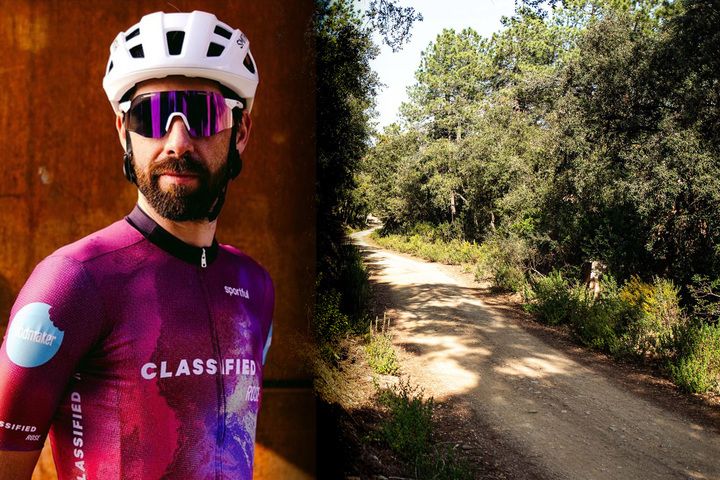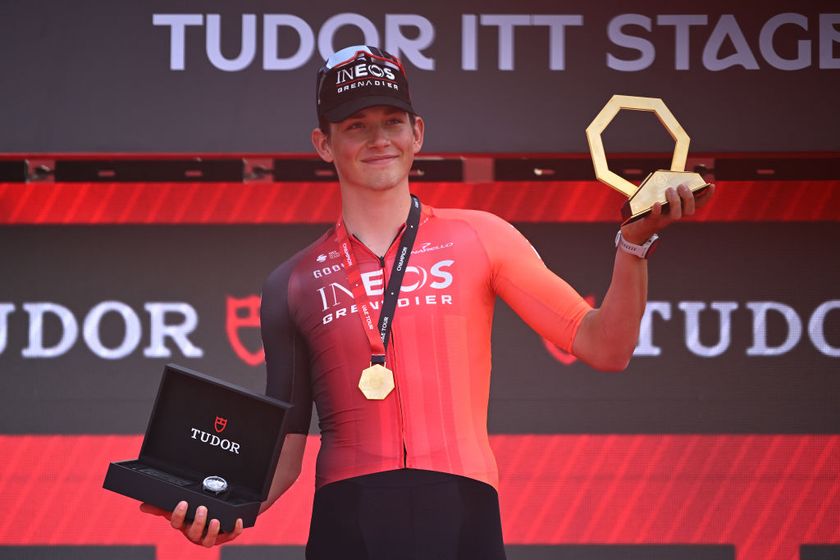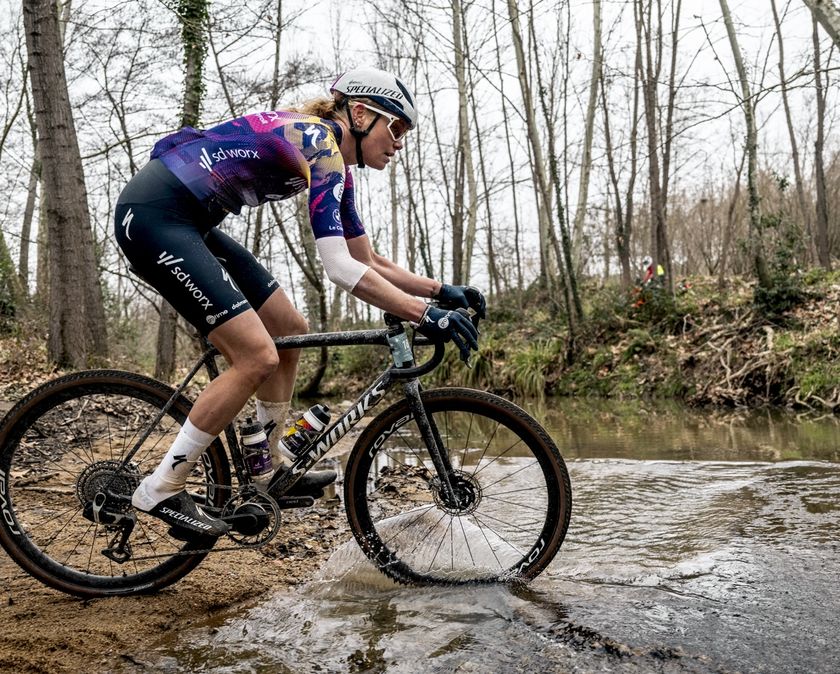Deceuninck-QuickStep use strength in depth to dominate Strade Bianche - Analysis
Tuscan dirt roads become a chessboard of perfect moves setting up Alaphilippe’s victory






As Julian Alaphilippe headed to the podium to be celebrated as the winner of this year's Strade Bianche, Greg Van Avermaet could look back at his own race and admit that "the strongest man in the race won."
'Golden Greg' is always graceful in defeat but his comments carefully hid the whole truth about Strade Bianche and the other five one-day races so far contested: Deceuninck-QuickStep again used their strength in numbers to win just as they did at the Cadel Evans Great Ocean Road Race, Omloop Het Nieuwsblad and Kuurne-Bruxelles-Kuurne. They have also won with five different riders, a further indication of their strength in depth and their team unity. It is a devastating combination.
Deceuninck-QuickStep team manager Patrick Lefevere has been adept at using his strong roster to dominate the Classis for years but after Tom Boonen's retirement and now Niki Terpstra's move to Direct Energie, the Belgian team has become even more of a collective, a cooperative of hard workers and classy riders, with the incentive of big bonuses and careful management of ambition creating a team that is always hungry for success.
At Strade Bianche, Deceuninck-QuickStep again used their combined strength to help Alaphilippe win. The team was under pressure to back him and the Frenchman was under pressure to pay them back for their support.
Deceuninck-QuickStep realised sooner than most of their rivals that the 3173m of climbing, often on the 63km of dirt roads, means that Strade Bianche is more suited to climbers than cobbled specialists. Alaphilippe had never ridden Strade Bianche but was convinced that his bike handling skills make him ideal for the dirt roads, while his climbing skills – testified by his Fleche Wallonne success – meant that the steep climb of Via Santa Caterina up to the finish in central Siena was an opportunity rather than an obstacle.
While Peter Sagan is hoping to be competitive through until Liege-Bastogne-Liege, Alaphilippe did the opposite and moved his goals forward and built his spring campaign on a March peak that spans from Strade Bianche to Milan-San Remo. He raced the Vuelta a San Juan and then Colombia 2.1 as preparation and then stayed on in Colombia for further altitude training to build towards his early-spring objectives.
Deceuninck-QuickStep clearly had a team leader and potential winner and also had Stybar as a proven plan B. They also ensured they had the support to help their leaders. Local rider Eros Capecchi, Dries Devenyns and Petr Vakoc were selected for the early work, with Pieter Serry and Yves Lampaert there to offer support in the final.
Get The Leadout Newsletter
The latest race content, interviews, features, reviews and expert buying guides, direct to your inbox!
Check mate to Deceuninck-QuickStep
After the wearing down process of the first half of the race, Greg Van Avermaet, keen to make selection of strongest riders, kicked off the decisive attacks with 50km to go. It was a brave move but perhaps led to his own defeat.
Tactics and a sense of sacrifice are as important as rider strength and speed in major bike races. Lampaert may now be Belgian national champion but he has risen from domestique life and instantly knew he had to sacrifice his chances to make sure the attack would stay away. As the chasing group scrambled to mount a pursuit, he dragged the attack over the long eighth sector of dirt roads and on the fast, paved roads. He soon broke the spirit of the chasing group, putting them a minute behind. It was a decisive effort, which deserves recognition.
As the final short but steep sectors of dirt road arrived in the last 25km, Alaphilippe could focus on Deceuninck-QuickStep's end game.
When Fuglsang attacked over a steep rise on the dirt roads of sector nine and Wout van Aert (Jumbo-Visma) went with him, Alaphilippe knew it was a decisive moment in the race. He was not perfectly positioned but pushed to get out and danced on the pedals to quickly join the move. Everything happened in a few seconds of courage and a few seconds of hesitation.
The presence of Stybar and Lampaert made Van Avermaet and others think twice and blink. They knew that any chase would only help their rivals by setting up Deceuninck-QuickStep's second attack. If bike racing is a game of chess, it was suddenly 'check' to Deceuninck-QuickStep.
"In every race, others are looking at us to take the responsibility, and that's what we did. We were with three riders in the main selection, controlled every move and did a really smart race in all the key moments. When Fuglsang went, I knew that it might be the winning move," Alaphilippe explained post-race.
Van Aert explained that he went with Fuglsang because it is better to be up front on the attack than stuck behind. Van Avermaet should have followed the same tactic but admitted he simply did not have the legs and was out of position when the attack went clear. He was also alone and exposed, with all his teammates struggling in the chase groups. Stybar and Lampaert could simply sit and wait on the wheels in case Alaphilippe faltered.
But Alaphilippe was on superb form and showed no signs of weakness. He was able to stay with Fuglsang when he kicked on the 18 per cent section of the Le Tolfe sector of dirt roads and worked with the Dane to distance Van Aert, while also letting him know that he had teammates behind who could also win the race. Fuglsang had Lutsenko but wanted to win himself and so rode hard to ensure they stayed away.
Their games allowed Van Aert to get back on before the climb up to Siena, but his chase had cost him dearly and Via Santa Caterina was a battle between Alaphilippe and Fuglsang.
Fuglsang kicked first and was the first to crest the 16 per cent gradient but Alaphilippe was with him and had something left in his legs.
It was his Strade Bianche debut but he knew he had to lead down the fast narrow road to towards the finish and so while Fuglsang tried to recover slightly from his efforts, Alaphilippe kicked hard and sprinted past him to take the front. Better bike skills going through the final corners allowed Alaphilippe to open a gap and ride into Piazza del Campo victorious.
Check mate and win number 15 for Deceuninck-QuickStep.
Van Aert finished third at 27 seconds, with few noticing that Stybar took fourth ahead of Benoot and Van Avermaet, while Lampaert hung on to finish 11th and last of the front group.
Stybar and Lampaert searched out Alaphilippe in the chaotic finish area and hugged him emotionally, genuinely happy for their teammate and no doubt happy to have earned a share of the substantial win bonus.
Deceuninck-QuickStep's numbers game and team tactics had trumped yet again.

Stephen is one of the most experienced member of the Cyclingnews team, having reported on professional cycling since 1994. He has been Head of News at Cyclingnews since 2022, before which he held the position of European editor since 2012 and previously worked for Reuters, Shift Active Media, and CyclingWeekly, among other publications.
Most Popular





